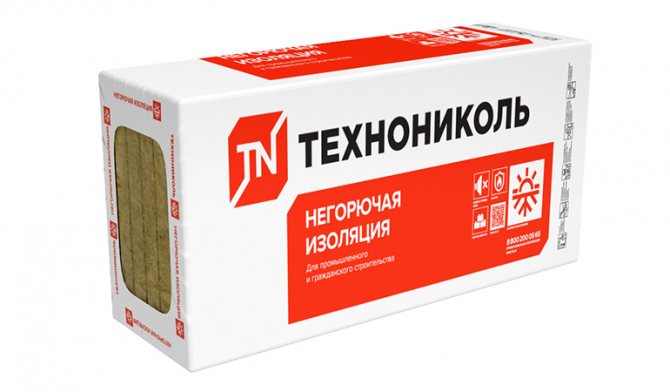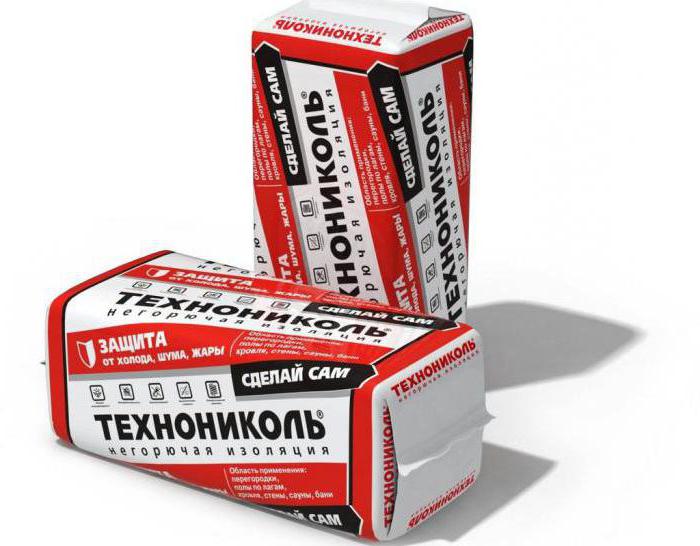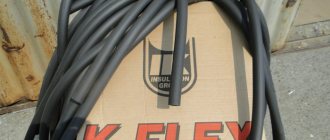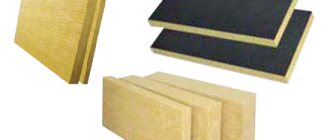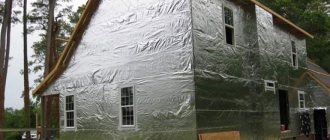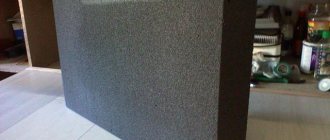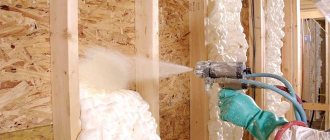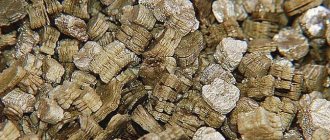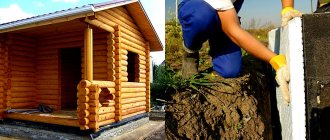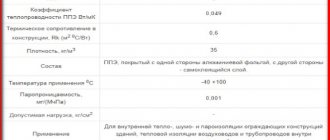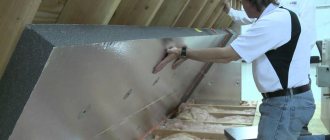A building can lose up to 1/5 of the heat through the roof, which means that this is an Achilles heel in the thermal insulation of the room. And if a pitched roof is created in order to retain the cold, due to a large air gap (attic), a flat one is deprived of such an opportunity. To solve problems, mainly insulation of a flat roof, the TechnoNikol insulation of the Technoruf series has been developed.
The quote taken on the official website of the manufacturer clearly indicates the scope of the material:
Purpose of Technoruf
Although, it is worth noting that it is also possible to insulate pitched roofs with this material.
General features
Technoruf is a mineral wool insulation in the form of rigid slabs. Hard because the minimum density is 121 kg per cubic meter. Given the density, the conclusion immediately suggests itself that the material is intended for highly loaded surfaces requiring insulation. For example, such an area is an exploited flat roof. Insulation can be fixed on a metal or reinforced concrete base, and a concrete screed before or after the material is not a prerequisite. Below in the plate are the summary technical characteristics of Technoruf. If you are already a professional and are looking only for numbers, we will not delay you with unnecessary explanations.
| Obsolete name | Density | Thickness, mm | Thermal conductivity A25 | Water vapor permeability, not less than mg / (m h Pa) | Organic matter content, no more,% | Compressive strength at 10% deformation, not less | |
| Technoruf 45 | 126-154 | 50-150 | 0.038 | 0.3 | 4.5 | 45 | |
| Technoruf Technoruf PROF | 145-175 | 20-100 | 0.038 | 0.3 | 4.5 | 60 | |
| PROF with | 145-175 | 30-250 | 0.038 | 0.3 | 4.5 | 60 | |
| Technoruf N30 | 100-130 | 50-200 | 0.038 | 0.3 | 4.5 | 30 | |
| N OPTIMA | H35 | 100-120 | 50-250 | 0.038 | 0.3 | 4.5 | 35 |
| H EXTRA | 90-110 | 50-25 | 0.037 | 0.3 | 4.5 | 30 | |
| Technoruf B60 | 165-195 | 40-50 | 0.038 | 0.3 | 4.5 | 60 | |
| IN OPTIMA | 165-195 | 20-100 | 0.041 | 0.3 | 4.5 | 70 | |
| In PROF | B80 | 175-205 | 20-100 | 0.041 | 0.3 | 4.5 | 80 |
| IN EXTRA | B70 | 155-185 | 40-50 | 0.038 | 0.3 | 4.5 | 65 |
| EXTRA with | 155-185 | 20-100 | 0.04 | 0.3 | 4.5 | 65 |
Specifications

Specifications
Insulation is used in flat roofs and roofs with a slope, on reinforced concrete slabs, metal or roll base.
The main characteristics of the Technoruf miniplate:
- density within 100 - 190 kg / m3;
- thickness from 30 to 100 mm;
- withstands concentrated load up to 600 N;
- compressive strength within 30 - 60 kPa;
- vapor permeability for all types is not less than 0.3 mg / (m · h · Pa);
- flammability category - NG;
- moisture content in the mass is not higher than 0.5%;
- water absorption is not more than 1 - 1.5%;
- the presence of organic matter is not more than 4.5%.
The compressive strength is important for the operated roofs, on which the passage of people is provided, the installation of additional equipment. Humidity and the ability to absorb water affects the thermal insulation characteristics, since when wet, the conductivity of energy flows increases. The thickness of the material is selected depending on the climate and roof structure, but is more often used in accordance with the design documentation.
Scary numbers in titles
As is customary in any company, the indices in the names of the models are for informational purposes. In the case of our material, numbers from 30 to 60 indicate the material's ability to resist stress. This value is indicated in Kilopascals. Previously, numbers up to 80 were used, however, recently these indices have become not quite accurate to convey information. For example, Technoruf B70, called in the past, is now called B PROF and has a density index of 65, and the B50 index is not used at all. The type of marking Technoruf 50 does not exist at the moment either. If the manufacturer had left the previous index, it would not correspond to reality. It should also be noted that the Technoruf N PROF index does not exist. There is only Technoruf PROF (without the letter H) and it does not need a second, additional bottom layer.
Where is Technoruf B60 applied?
The main purpose of this material is to insulate roofs, both operated (flat) and unexploited (made with a slope), as well as other building structures (foundation, load-bearing walls, floors) made of metal and reinforced concrete. It is most widely used in the arrangement of operated roofs (since it can withstand frequent point loads), where it serves as the top layer of thermal insulation.
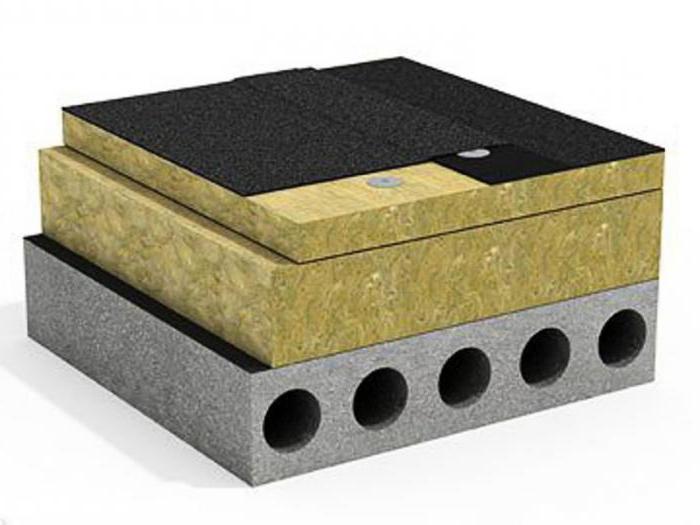

In addition, it can also be used on roofs without screed. This is due to the fact that Technoruf B60 has technical characteristics in terms of:
- compressive strength - at least 60 kPa at 10% deformation;
- peel strength of layers - at least 15 kPa.
The Great Mystery of All Time: V or H
As is the case with numbers, the letters indicate the parameters of the ruler. Some representatives of the line can only be used in two-layer insulation systems. In this case, one is laid as the bottom layer and is designated by the letter "H", and the second, respectively, as the top "B" (yes, yes, not "second", but "top"). Materials that do not have an "H" or "B" index are intended for single-layer insulation, for example, Technoruf 45 or PROF insulation. Now try to say to yourself, say, what is hidden behind the H30 index. For those who skipped the previous paragraph, titles like "Extra" and "Optima" were used instead of numeric indexes.
What is behind the H30 index?
Advantages and disadvantages
The main advantages of the "Technoruf H30" insulation include:
- Low thermal conductivity;
- Resistant to high temperatures and open fire;
- Ability to restore shape and volume;
- High performance of sound insulation;
- Biological resistance;
- Inertness to aggressive chemical compounds;
- Simplicity of cutting and installation work.
If the material is used for its intended purpose, in compliance with the laying technology, the service life can be 50 years or more.
As for the shortcomings, in the process of long-term operation of correctly assembled thermal insulation systems, those were not identified.
And one more thing for a snack
For complete clarity in the names, we just have to learn three names:
WEDGE
These are slabs with a slope, which are designed to create a slope of the roof;
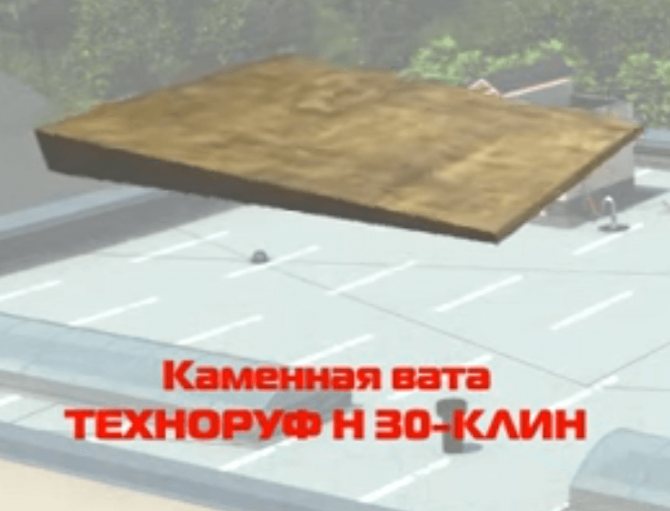

Technoruf KLIN
FILLET
Insulation elements for the transition from a horizontal to a vertical insulation surface. For example, for thermal insulation of a parapet.
Technoruf GALTEL
N VENT
This type of slab has special channels for draining water. This technology is intended for the treatment of flat roofs disease - the formation of fungus and disturbance of the indoor climate


Technoruf N VENT
THERMAL INSULATING MATERIALS PRODUCED BY TECHNONICOL FOR DEVICE OF BUILDING STRUCTURES
WALLS, COVERINGS, ROOFS, FLOORS, PARTITIONS, FRONTING THE MANSARD STRUCTURES AND ATTIC COVERINGS WITH THE APPLICATION OF TECHNO MINERAL WOOD PLATES AND TECHNONICOL EXTRUSION FOAM POLYSTYRENE PLATES XPS TECHNONICOL. PART 8. CONSTRUCTION SOLUTIONS FOR ROOFING ON THE EXAMPLE OF APPLICATION OF THERMAL INSULATION PLATES FROM BASALT THERMAL INSULATION TECHNOROOF SERIES TECHNONICOL: TECHNOROOF V60, TECHNOROOF N30, TECHNOROOF 45.
PART 8. CONSTRUCTION SOLUTIONS FOR ROOFING ON THE EXAMPLE OF APPLICATION OF THERMAL INSULATION PLATES FROM BASALT THERMAL INSULATION TECHNOROOF SERIES TECHNONICOL: TECHNOROOF V60, TECHNOROOF N30, TECHNOROOF 45.
CONSTRUCTION SOLUTIONS FOR ROOFING
8.1 The structures are designed for combined coatings with prefabricated reinforced concrete slabs (or with a monolithic reinforced concrete base) and with steel profiled decking with insulation from basalt thermal insulation of the TECHNOROOF series produced by TechnoNICOL: TECHNOROOF V60, TECHNOROOF N30, TECHNOROOF 45 and roofs made of roll materials (Technoelast other series produced by TechnoNICOL) and from steel profiled sheets.
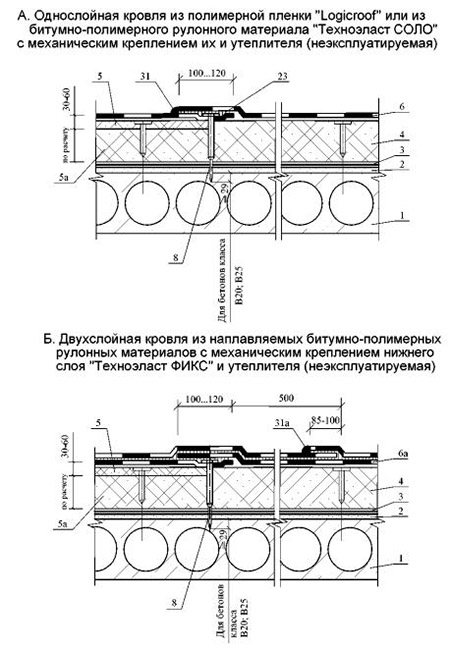

8.2 In general, the coating includes the following structural layers:
- bearing base (reinforced concrete or steel galvanized profiled decking);


- vapor barrier layer (by calculation) of bitumen-polymer fused roll materials - on the base of reinforced concrete (Bipol EPP); from bitumen-polymer self-adhesive roll materials with a reinforcing base made of glass mesh (Steam barrier CA 500, Steam barrier SF 1000) - on the base of profiled sheets;
- thermal insulation from basalt slabs "TECHNOROOF", "TECHNOROOF N30", "TECHNOROOF B60", "TECHNOROOF 45" or extruded polystyrene foam TECHNONICOL XPS CARBON;
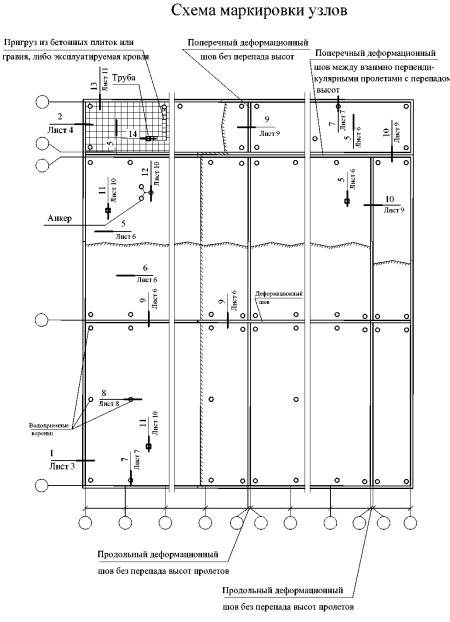

- a cement-sand screed made of mortar with a strength of at least 5 MPa or a prefabricated screed made of flat asbestos-cement pressed sheets 10 mm thick or cement-bonded particle boards 10 mm thick with a roof made of roll materials;
- roofing made of rolled materials (Technoelast, Uniflex and other series produced by TechnoNICOL) or from steel profiled sheets; a roofing carpet made of PVC membranes of the LOGICROOF, ECOPLAST series produced by TechnoNICOL and from a welded bitumen-polymer roll material TECHNOELAST SOLO RP1, TECHNOELAST TITANIUM SOLO, made single-layer, and from other brands produced by TechnoNICOL corporation - two-layer materials with coarse marking for the top layer EKP, TKP, HKP.
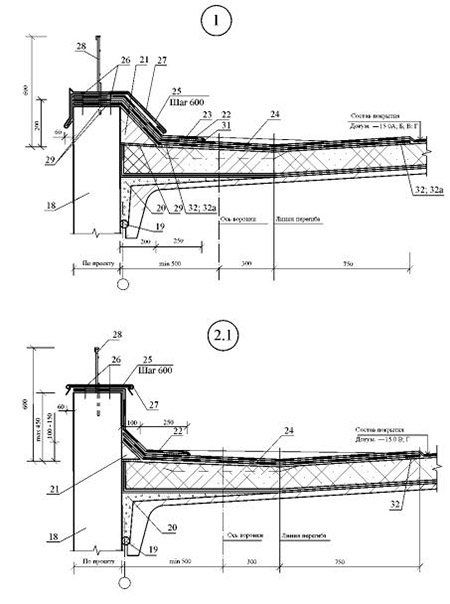

Note: on the base of basalt slabs "TECHNOROOF", "TECHNOROOF N30", "TECHNOROOF V60", "TECHNOROOF 45", the use of welded roll materials with a reinforcing base made of glass fiber is not allowed.
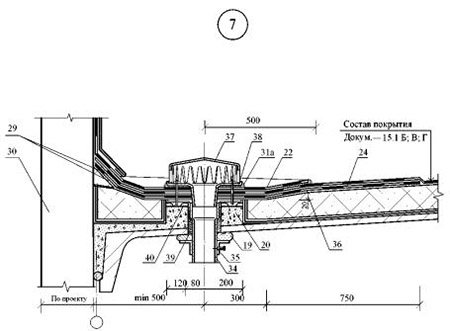

8.3 The following are provided as fasteners:
- for coatings on prefabricated or monolithic reinforced concrete bases: a set of TechnoNICOL dowels for flat roofs, corrugated board bases: TechnoNICOL telescopic fasteners and TechnoNICOL pointed self-tapping screws.
In order to read the entire instruction, follow the links below: Part 1 Part 2 Part 3 Part 4 Part 5 Part 6 Part 7 Part 8 Part 9 Part 10 Part 11 All the materials required for the organization of insulation and repair of facades, roofs, foundations, walls, ceilings and other building structures can be purchased in by calling us, or by making an application in the online store on our website. You can also pick up the material from our warehouse. Helpful !!! In conclusion to this material, we recommend watching on our channel in YOUTUBE a series of detailed videos on the organization of installation work on the installation of insulation of building structures using heat-insulating basalt plates of the TECHNOROOF series: TECHNOROOF N30, TECHNOROOF B60, TECHNOROOF 45, components for roofs, facades, installation equipment and other building insulating materials and equipment produced by the TechnoNIKOL corporation. Organization of installation work for the installation of basalt slabs TECHNOROOF N30, TECHNOROOF B60, TECHNOROOF 45 and other thermal insulation materials based on mineral wool produced by TechnoNICOL: www.youtube.com/TK CentroStroy / Thermal insulation TechnoNIKOL / TECHNOROOF V60
The Layers Question
Why might there be a need for two-layer insulation? It is no secret that Technoruf slabs, like any mineral wool slabs, retain heat mainly due to air. It is gas that is much less conductive of heat than solid. The more air in the plate, the lower the thermal conductivity, BUT, and the lower the rigidity. Look again at the table just above. Find in it, for example, Technoruf V EXTRA (Technoruf B70). Its density is from 155 to 185 kg per cubic meter and the thermal conductivity coefficient is 0.038. Compare this indicator with Technoruf N EXTRA. 90-100 kg per m3 and 0.037. The difference in numbers is small, but it is there. And on large areas, a loss of one thousandth in the coefficient of thermal conductivity translates into hundreds of thousands of rubles for heating.
Roofing insulation TechnoNICOL TECHNOROOF B60 | density | 0.144 cubic meters |
TechnoNICOL TECHNOROOF V 60 (0.1152 m3) is used as the outer (top) heat-insulating layer of flat roofs on a reinforced concrete or metal profiled sheet base. These are mineral wool slabs made from igneous rocks of the basalt series. Insulation belongs to the group of high-strength materials, capable of withstanding general plane and point loads.
Installation features
As a rule, "B 60" is used in combination with insulation "Technoruf N". The system structure looks like this:
Load-bearing base and vapor barrier material for flat roofs.
Slabs (basalt, mineral wool) Technoruf H 30.
Insulation Technoruf B 60.
Fusing and mastic materials are used as a finishing roofing carpet. Due to the high density "B 60", a protective screed is not necessary.
Application Technoruf B 60 ensures the rigidity and strength of the roof. The resulting loads are evenly redistributed over the entire surface, maintaining the integrity and efficiency of thermal insulation.
Advantages of the material
Durability - does not rot, does not crumble, resistant to temperature extremes, microorganisms, chemicals, rodents. The service life of the insulation is at least 50 years.
Excellent heat-saving properties - allows you to keep a significant part of the heat.
Good sound insulation characteristics - absorbs extraneous noise.
Waterproof.
Retains the original geometry, does not change shape and volume. Such features provide the most effective thermal insulation, the absence of cold bridges at the junction of basalt slabs.
Light weight - ease of installation, transportation and lifting to a height.
The insulation is resistant to thermal effects, including contact with an open flame - it does not burn, does not deform, does not spread fire (class of non-combustible materials).
Separately, it is necessary to note the safety of use and environmental friendliness. TechnoNICOL TECHNOROOF B 60 (0.1152 m3) does not emit toxic by-products, does not pose a threat to human health and the environment.
Other products from this manufacturer:
Insulation TechnoNICOL
Extruded polystyrene foam XPS TechnoNICOL
In our catalog you will find a detailed description and technical characteristics of all TechnoNICOL products. Delivery of TechnoNICOL TECHNOROOF B 60 (0.1152 m3) takes place throughout Moscow and the region.
What do they use?
The most popular in construction are Technoruf H30 and B60 insulation... Their use is optimal in the middle regions of Russia. H30 is used for the bottom layer, and the upper layer, which is subjected to high stress, is covered with Technoruf 60 insulation. Technoruf 45, the density of which is 126-154 kg per m3, is also in demand as a single-layer insulation.
We hope that this short description of the TechnoNicol roofing line will help you in insulating a flat roof or other roof. Or maybe, as some enthusiasts, you decide to use the material even for facade insulation. In any case, do not forget to look at the manufacturer's instructions, drink more hot tea in winter and look at the stars more often.
Styling features
Before proceeding with the installation of the plates, it is necessary to study their markings. In this case, H30 means that you are dealing with a basalt slab intended for laying the lower layer of thermal insulation and capable of withstanding a load not exceeding 30 kPa / m2. If during the operation of the roof no mechanical loads are provided, the material with the brand "N"
can be used without additional protection.
This is different when using the roof as a support surface.Basalt slabs "Technoruf" with markings are used to lay the upper layer of the roofing cake, to evenly distribute the load and protect the lower layer from mechanical damage. "AT",
capable of withstanding loads from 45 to 70 kPa / m2. Laying is carried out in several stages:
- Waterproofing of the insulated surface is carried out using a polyethylene film or roofing material.
- Insulation "Technoruf H30" is installed with the help of special dowels with a wide washer. In the process of fastening, the formation of gaps and gaps between the plates should be avoided, and the plates themselves should be staggered.
- The denser top layer is laid directly on the bottom layer, avoiding overlapping joints.
- The top layer is covered with a PVC film membrane.
